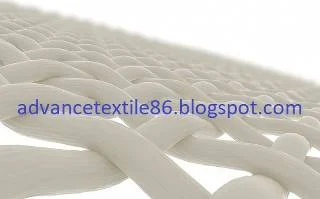Synthetic fibers
Synthetic
fibers are fibers that are made by humans through chemical synthesis, as
opposed to natural fibers that are directly collected from living organisms.
These are man-made, so they are called synthetic or man-made fibers. These fibers are chains of small units that are joined together. Each small unit is
actually a chemical substance. These can be made from plastic, metal, or
ceramic which means they can be soft or hard, weak or strong, comfortable or
uncomfortable.
Synthetic
fibers are made of synthetic polymers of molecules. The compounds used to make
these fibers come from raw materials such as petroleum-based chemicals or
petrochemicals. These substances are polymerized into a chemical that binds two
adjacent carbon atoms. Various chemical compounds are used to make different
types of synthetic fibers.
What are the properties of synthetic fiber?
i.
Length: The length of
the fibers is man-made so it is controllable. These are filament fibers but can
be cut into staple fibers for different uses.
ii.
Strength: Stronger and more robust than naturally occurring fiber.
iii.
Comfort: Synthetic
fibers are not as comfortable in clothing as natural fibers.
iv. Dust and impurities: These are
absent or minimum in synthetic fibers.
v.
Hydrophobic: Most
synthetic fibers are of hydrophobic nature; rayon is an exception. Dyeing or
dyeing is difficult to apply to synthetic fibers compared to natural fibers.
vi.
Durable: Synthetic
fibers are stronger and more durable, which is why the use of synthetics is
much wider than that of natural fibers.
vii.
Multitask: Synthetic
fibers are used in multi-tasking compared to natural fibers; the use of natural
fibers is more limited than synthetic.
viii.
Burns: Synthetic fibers
burn and melt and smell chemicals.
ix.
Economical: Synthetic
fibers are more economical.
x.
Sustainability:
Synthetic fibers are less environmentally friendly, especially polypropylene.
xi.
Availability: Available
readily as compared to natural fibers.
xii.
Washability: These are
easy to wash.
xiii.
Chemical resistant:
These are chemically resistant fibers.
xiv.
Nature: These fibers
are filaments that are crystalline in nature.
xv.
Effect of insects: Due
to its man-made nature the fabric is seen in natural fibers without any risk of
damage by insects.
xvi.
Flammability: Tend to
retreat from flames and melt and burn easily.
xvii.
Comfortability: These
may be produced from plastics, metals, or ceramics. They may be soft or hard,
weak or strong, comfortable or uncomfortable.









0 Comments